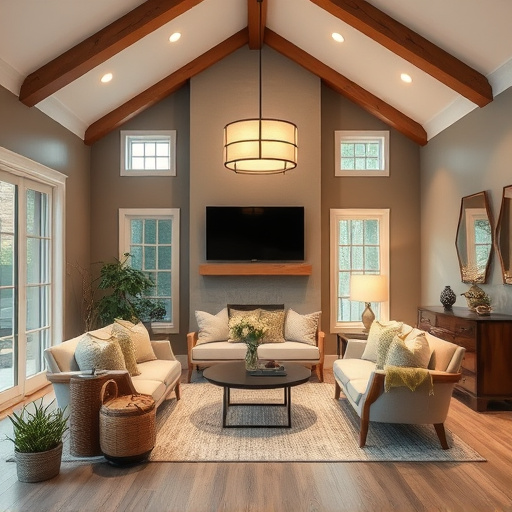Aging-in-place modifications through strategic home renovations are gaining popularity among seniors as a way to address mobility challenges and physical disabilities, enhancing safety, independence, and quality of life. Key features include grab bars, non-slip flooring, wider doorways, lower toilet heights, and secure fixtures, all tailored to individual needs. These renovations reduce fall risks and healthcare burdens, fostering a sense of security and comfort in one's home as they age.
As people age, modifying their homes to support aging-in-place becomes essential for maintaining independence and safety. Among these modifications, enhancing bathroom accessibility is paramount. This article explores how strategic home renovations can transform bustling bathrooms into safe havens for seniors. From identifying common challenges like slippery surfaces and low counter heights to understanding key considerations for safe repairs and essential features for an accessible space, we delve into the benefits of implementing these aging-in-place modifications, ultimately enhancing quality of life through smart home renovations.
- Understanding Aging-in-Place Modifications
- Identifying Common Bathroom Accessibility Challenges
- Key Considerations for Safe Renovations
- Essential Features for an Accessible Bathroom
- Benefits and Impact of Enhancing Bathroom Safety
Understanding Aging-in-Place Modifications
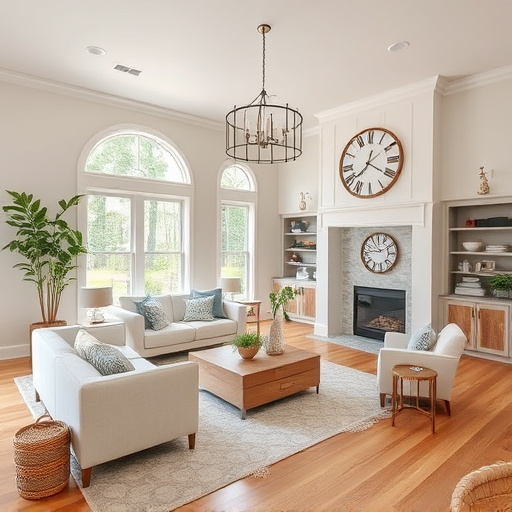
Aging-in-place modifications refer to specific home renovations designed to ensure seniors can live safely and comfortably in their own homes as they age. These modifications go beyond traditional home improvements; they’re tailored to accommodate physical changes and mobility challenges that often come with aging. By making strategic adjustments, such as installing grab bars in the bathroom or adding non-slip flooring, homeowners can create a more accessible and secure environment without sacrificing aesthetics or functionality.
This approach to home renovations is gaining traction among seniors who wish to remain independent as they grow older. It’s not just about adapting to physical limitations; it’s about embracing a lifestyle that values autonomy and quality of life. Understanding these modifications is crucial for seniors, their caregivers, and professionals in the construction and design fields alike, as they play a significant role in promoting an active and fulfilling aging experience right within the familiar confines of one’s home.
Identifying Common Bathroom Accessibility Challenges
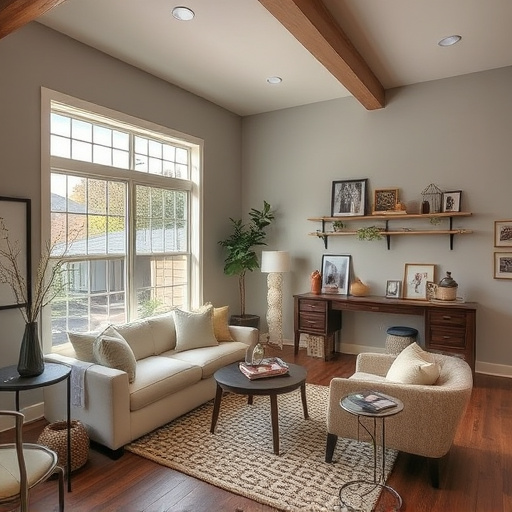
Many older adults face challenges navigating their bathrooms due to age-related mobility issues or physical disabilities. These common accessibility barriers can include narrow passageways, slippery surfaces, and high-reach fixtures. For instance, a standard toilet height might be difficult for those using wheelchairs or walkers, and batten doors or lack of grab bars in the shower pose significant safety risks.
Home renovations focused on aging-in-place modifications play a pivotal role in addressing these issues. By installing wider doorways, lowering the toilet height, and adding essential safety features like non-slip flooring and sturdy grab bars, homeowners can create a more accessible and secure bathroom environment. These adjustments not only enhance independence but also ensure the well-being of aging individuals, allowing them to remain comfortably in their homes for longer.
Key Considerations for Safe Renovations
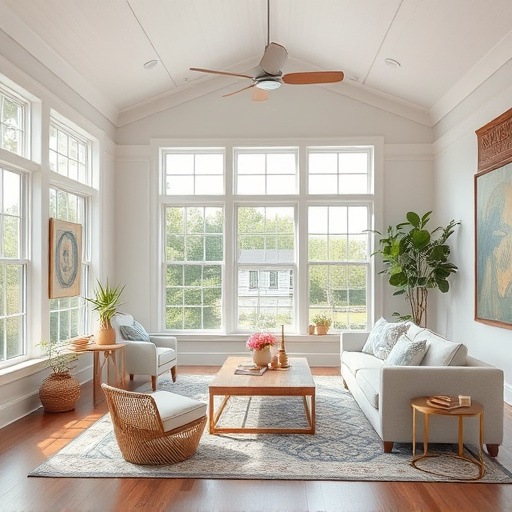
When undertaking home renovations for aging-in-place, several key considerations ensure safety and accessibility. The primary focus should be on creating a functional space that caters to the changing needs of older adults. This involves evaluating existing layout designs and making adjustments to improve mobility and ease of use. For instance, installing grab bars in strategic locations, such as shower areas and near the toilet, can provide much-needed support and prevent falls.
Additionally, selecting suitable fixtures and appliances is essential. This includes low-threshold showers, slip-resistant flooring, and easily operable hardware for faucets and drawers. Illuminating these areas adequately is another critical aspect to consider, as good lighting minimizes hazards and enhances overall safety. Incorporating these modifications thoughtfully will enable seniors to maintain their independence while ensuring a secure living environment.
Essential Features for an Accessible Bathroom
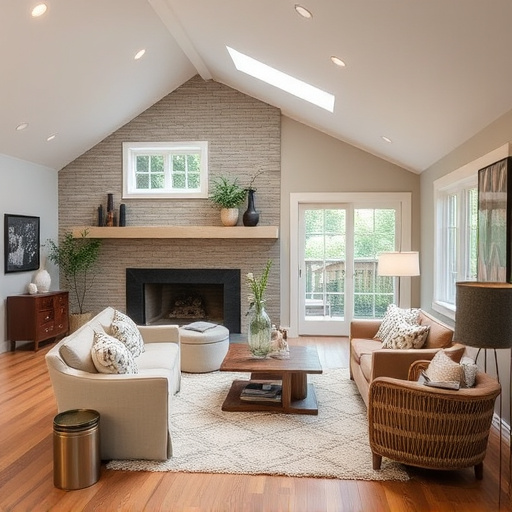
When designing or modifying a bathroom for better accessibility and safety, especially as part of aging-in-place initiatives, several key features are essential. These include installing grab bars in strategic locations, such as near the shower or bathtub, to provide stability and support. Non-slip flooring is another crucial addition, reducing the risk of falls by enhancing traction.
Additionally, raised toilet seats or bidets can greatly improve comfort and accessibility for those with limited mobility. Wider doorways and clear pathways ensure easy navigation with a walker or wheelchair. Low-peel fixtures and handles in places like the shower and sink area make it easier for individuals to maintain their balance and independence during bathroom use. These modifications, part of broader home renovations, are vital steps towards creating a safer and more comfortable living space tailored to individual needs as they age.
Benefits and Impact of Enhancing Bathroom Safety
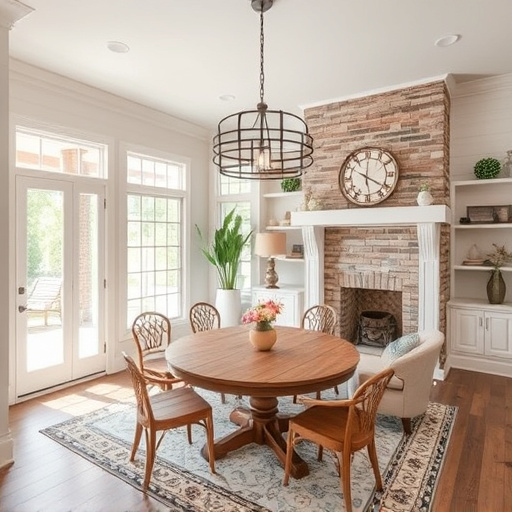
Enhancing bathroom safety through aging-in-place modifications offers numerous benefits for seniors, promoting independence and improved quality of life. These transformations cater to a wide range of needs, from installing grab bars and non-slip mats to upgrading fixtures for easier access. Such home renovations not only make daily routines safer but also foster a sense of security and well-being, allowing individuals to remain in their homes comfortably as they age.
The impact extends beyond individual benefits; it encompasses community and family aspects. Enhanced bathroom safety reduces the risk of falls and related injuries, alleviating potential burdens on caregivers and healthcare systems. Moreover, these modifications can be tailored to personal preferences, creating a familiar and comfortable space that aligns with individuals’ unique needs and lifestyles.
Aging-in-place modifications are not just about making homes more comfortable; they’re crucial home renovations that enhance safety, independence, and quality of life for older adults. By addressing common bathroom accessibility challenges through strategic renovations, homeowners can create a secure environment tailored to their needs. Investing in these modifications is a significant step towards ensuring a safer and more enjoyable aging process within the familiar setting of one’s own home.
